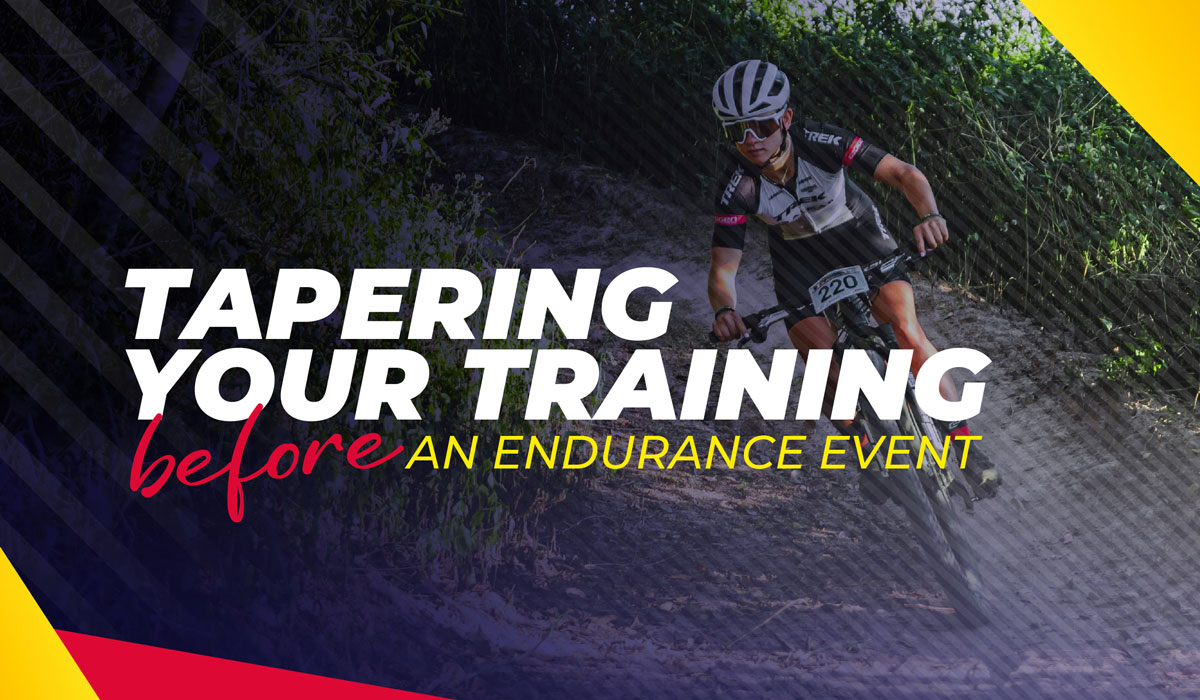
Smart Strategies to Master Your Training Taper and Maximise Performance
Arriving at the start of your “A” race or event in peak physical condition takes months of meticulous preparation and dedicated training following a scientifically programmed plan, but this hard work can all be undone without an adequate training taper.
Getting the training taper wrong, or worse, not tapering at all, will result in sub-optimal race-day performance as your body hasn’t had the time to recover and adapt to the training.
What is a training taper?
A training taper is a strategy that allows athletes to peak for major competitions. It involves manipulating both the volume and the intensity of the training during the taper period to “flush out” fatigue without losing training-induced adaptations.
The taper isn’t about stopping completely, though.
It’s a strategic reduction in training volume and intensity that allows your body to recover and rebuild, leaving you feeling refreshed and ready to unleash your peak performance.
Your body needs this time to replenish depleted energy and nutrients and repair the tissue damage that happens during heavy training blocks, which only happens with adequate rest and recuperation and the correct diet.
If athletes continue with high-volume training in the lead-up to a big event or race, they won’t have the capacity to compete at the highest level.
In contrast, athletes who stop all training before their targeted event tend to come in over-tapered, leaving them feeling heavy, slow and sluggish. This happens as you lose some of your fitness and conditioning.
What to do during a taper
No matter your sport, a training taper will gradually reduce training volume while maintaining or even upping the intensity of workouts. Don’t abruptly cut back on training.
While reducing volume, prioritise quality workouts. Including a few short intensity sessions in your taper keeps your neuromuscular system “sharp”.
During these sessions, an athlete should work at a race-pace intensity or slightly higher, incorporating a few intervals or bursts. The trick is to leave this short but intense training session wanting more.
It is also important to prioritise recovery during the taper by aiming to get 7-9 hours of quality sleep a night and stay off your legs as much as possible, especially in the final days before the race or event.
You can also incorporate relaxation techniques like deep breathing or meditation to help reduce and manage overall stress levels.
Continue to eat a healthy diet during your taper. However, you may want to slightly increase your carbohydrate intake to help your body store glycogen, which is the fuel your muscles use during exercise.
Depending on the length of your taper, you may need to reduce your calorie intake slightly in response to your reduced training volume. It is important to not gain excess weight during the taper as this can impact your movement efficiency and economy.
It is also important to stay hydrated by drinking sufficient water throughout the day and taking an electrolyte supplement like Biogen Electrolyte+ effervescent tabs daily, especially in the last week before the event.
How long should a taper last?
There are various tapering methods and protocols, and the optimal taper will vary depending on the individual athlete and the distance or type of event.
The length of a taper will vary depending on the event. For instance, runners will follow a longer training taper before a marathon than a 10km race. General guidelines suggest:
- Marathon: 2 weeks
- Half marathon: 7-10 days
- 10km: 4-7 days
- 5km: 1-3 days
Marathon taper guidelines:
Cycle race taper guidelines:
HYROX taper guidelines:
Bodybuilding taper guidelines:
Individualisation is key
A taper is a critical part of any training program for a major event or race. By following these tips, you will arrive at race day feeling fresh and ready to perform your best.
Just remember that responses to training and tapering are highly individualised. It is important to experiment and find what works best for you. It is often beneficial to consult with a qualified professional or certified coach to take the guesswork out of your approach and nail your training taper for peak race-day performance!










